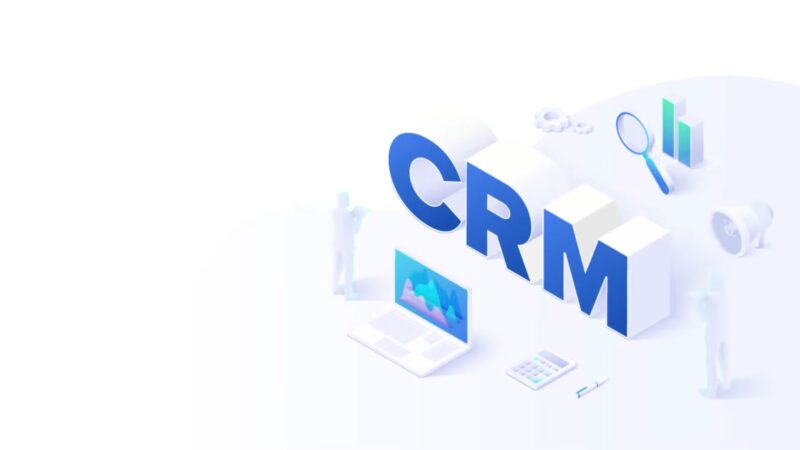CRM platforms are increasingly vital for sales strategy in businesses. The primary objective of a business is to foster customer relationships, and this starts with effectively monitoring customer data. Integrating a CRM system streamlines this monitoring, enabling easy tracking of the customer journey and the creation of captivating customer experiences.
Key Takeaways
- Platforms are key for sales strategies, focusing on fostering customer relationships through effective data monitoring and customer journey tracking.
- The main goals of a CRM include boosting business efficiency, enhancing customer satisfaction, expanding the customer base, supporting sales and support teams, and building long-term relationships.
- CRM systems streamline business processes by organizing customer data, facilitating personalized marketing, and improving interaction with customers.
- The CRM process is vital in generating brand awareness and lead acquisition, using targeted marketing and direct engagement strategies.
Goals and Objectives
The primary aim of a CRM system is to enhance the customer experience. A positive sales experience for customers often leads to higher sales. To maximize the benefits of a CRM, it’s crucial to establish clear goals and objectives. The top five objectives to consider are:
- Boosting business efficiency
- Elevating customer satisfaction
- Growing the customer base
- Augmenting sales and support teams
- Fostering long-term customer relationships
1) Boosting business efficiency

CRM systems aid in reducing daily inefficiencies in managing customer relationships. These platforms gather and sort customer data, enabling you to quickly identify the purchasing stage of each customer, along with crucial details like demographics and interests. Utilizing this data, you can craft and dispatch tailored marketing content in batches to customers, aligning with their specific data.
2) Elevating customer satisfaction
Satisfied customers often turn into loyal patrons who provide valuable word-of-mouth promotion. A robust CRM system focuses on making customer satisfaction a key objective. This is achieved through various means like enhanced direct interaction, engagement on social media platforms, automated surveys, and several other strategies.
3) Growing the customer base

Lead generation is essential for any thriving business. CRM platforms facilitate the tracking, managing, and enhancement of lead quality. Moreover, an effective CRM can pinpoint the actions that convert leads into prospective customers, enabling your business to expedite the sales process and expand your customer base.
4) Augmenting sales and support teams
A high-quality CRM offers advantages beyond just improving profits; it aids your sales and support teams in efficiently establishing and nurturing relationships with leads and clients. Timely follow-up on leads is crucial for conversion.
CRM lead tracking allows task assignment and enables team members to document leads and their progress within the sales pipeline. This grants everyone complete visibility, ensuring meticulous monitoring of all new leads to guarantee that no follow-up opportunity is overlooked.
5) Fostering long-term customer relationships
Utilizing platform empowers you and your team to recognize, prioritize, and carry out activities that greatly influence your customer relationships over the long term. Your CRM can assist in tracking and executing initiatives like customer referrals and loyalty programs.
Key Phases and Steps in the CRM Process

To fully grasp the purpose of CRM, it’s crucial to comprehend the lifecycle of your customers and the journey to becoming loyal patrons. Every prospect progresses through five stages: Reach, Acquisition, Conversion, Retention, and Loyalty, influenced by marketing, customer service, and sales efforts.
So, how does the CRM process facilitate this journey? It involves five critical steps that require a joint effort from your marketing, sales, and support teams. Each step and team member plays an essential role in transforming prospective leads into devoted customers. Let’s take a look into these five pivotal steps.
Generating Brand Awareness
The first step in business growth is to find new leads, which involves acquiring new customers. This requires understanding your target audience, segmenting them based on specific demographics, and crafting marketing campaigns tailored to these segments.
Your CRM becomes a valuable resource, enabling you to track and discern patterns from previous leads and current customers. This data offers a clearer understanding of the leads you’re targeting and which marketing strategies have been most effective.
Acquiring New Leads

Once you’ve identified your target leads, your marketing and sales teams can more effectively determine who to target and how. It can facilitate actions like automated newsletter signups on your website, or your sales team can engage in live chats to directly communicate with potential leads.
Lead Conversion
CRM tools, like lead scoring, aid your sales and marketing teams in pinpointing leads that are interested and prepared to become purchasing customers.
Customer Service and Retention
The role of the CRM doesn’t end once a purchase is made. Providing quality customer service and maintaining regular communication are key to retaining customers and encouraging their transition from buyers to brand advocates. Actions such as automated emails requesting referrals or reviews exemplify what a CRM can contribute at this stage.
Upsells or Customer Feedback

Customers often revisit businesses for products they trust and enjoy. Regular communication suggesting similar but higher-priced products can enhance customer value to your business.
For service-based businesses, this stage is ideal for regular customer check-ins to gauge service quality or identify potential improvements. Your CRM can schedule these check-ins and automate marketing emails for upsells, targeting specific customer groups.
FAQ
How does CRM integration benefit small businesses specifically?
Platforms are not just for large corporations. Small businesses can leverage CRM for better customer insights, improved time management, and personalized marketing strategies, which are crucial for growth in a competitive market.
Can this systems be customized for specific industry needs?
Yes, many CRM systems offer customization options to cater to the unique requirements of different industries, such as healthcare, real estate, or retail.
What is the role of artificial intelligence in CRM?
AI in CRM can enhance customer data analysis, automate routine tasks, provide predictive insights, and improve customer service through chatbots and personalized recommendations.
How do CRM platforms handle data security and privacy?
CRM platforms typically incorporate robust security measures, including data encryption, access controls, and compliance with privacy regulations like GDPR to protect customer information.
Is it possible to integrate other business tools with this system?
Most CRM systems allow integration with other business tools such as email marketing software, accounting systems, and project management applications for a more unified workflow.
How does It impact employee productivity?
CRM tools streamline processes, reduce manual data entry, and provide accessible customer information, thereby boosting employee efficiency and productivity.
What are the cost implications of implementing a CRM system?
Costs vary based on the CRM’s complexity, features, user count, and whether it’s cloud-based or on-premise. There are also affordable options for small businesses and startups.
Conclusion
They play a transformative role in modern business strategies. By offering detailed insights into customer behavior, fostering efficient team collaboration, and enhancing customer engagement, CRMs drive business growth and customer loyalty. This evolution in customer management marks a significant shift towards more customer-centric business practices, ensuring that businesses not only meet but exceed customer expectations.
